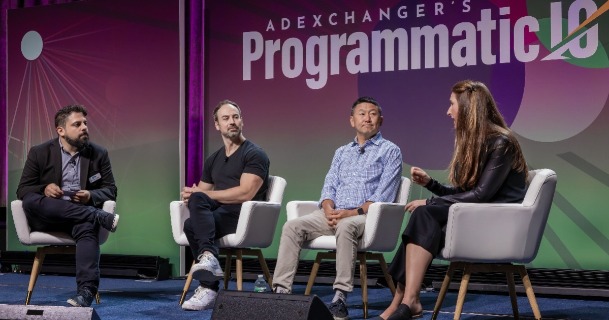
To unlock advertising’s potential in the gaming industry, publishers and advertisers must proactively devise innovative strategies. These strategies should involve integrating brands into immersive gaming experiences while upholding audience privacy and skillfully navigating challenging metrics.
The gaming industry has seen an unprecedented surge in popularity, reaching a broad spectrum of demographics and geographies. Gamers are not just the stereotypical nerdy kid secluded in their parent’s basement. Gaming’s allure has transcended its niche origins and evolved into a widespread cultural phenomenon, captivating a diverse audience.
As the gaming industry skyrockets, advertisers are rubbing their hands in glee at the advertising potential. Picture this: engaging with consumers right in the heart of immersive gaming environments. It’s like entering a world where ads are part of the adventure. But hold your horses; there are challenges on this wild ride.
During a recent panel discussion, Getting Into Gaming: Building Ads For Immersive, Interactive Experiences, at ProgIO, industry experts from Roblox, Activision Blizzard, and Super Awesome offered valuable guidance to publishers and advertisers seeking success in gaming advertising. Here are five takeaways from the session:
Level 1: Prioritize Audience Safety and Privacy
In gaming, prioritizing audience safety and privacy is paramount.
Richard Sim, Senior Director of Product Monetization at Roblox, emphasized, “We built Roblox on the foundation of safety and stability from the beginning. We take it very seriously, recognizing that we wouldn’t be where we are had we not applied those principles at Roblox.”
A sizable portion of Roblox’s user base is under thirteen, but the gaming platform has a policy against serving ads to this demographic. The company is committed to handling younger audiences with utmost care and responsibility, setting the stage for a secure and responsible advertising ecosystem. As the industry crafts impactful ad experiences within gaming, transparency and privacy are fundamental pillars for creating a great user experience.
Level 2: Innovate Ad Strategy
Advertising within the gaming sector demands innovative strategies to integrate with the gaming experience seamlessly. Publishers and advertisers must reimagine ad strategies to align with the gaming environment. If not, level one will trap them.
Sim said, “When I talk about building the immersive ad system, I do talk about reimagining advertising, trying to avoid a lot of past missteps such as privacy and transparency.”
Advertising strategies must evolve with the gaming industry to incorporate innovative approaches that respect user privacy and seamlessly integrate into the gaming narrative. You can’t press play without going all in! Advertising in gaming isn’t just about flashing billboards; it’s about becoming part of the gaming saga.
Level 3: Address Measurement and Metrics Challenges
Oh, and measuring success? That’s a whole different boss level. Traditional metrics don’t cut it in these immersive gaming realms.
Jonathan Stringfield, VP of Business Research & Marketing at Activision Blizzard, emphasized the challenges in measuring ad viewability in 3D immersive spaces, indicating the need for more nuanced metrics to provide insights into brand impact and ROI.
“While we work with all the standard ad measurement vendors, we recognize that gaming is newer for advertisers. Therefore, the burden of proof is on us to ensure we have the most empirically accurate measurement,” said Stringfield.
Gaming experiences require reevaluating how success is measured. Advertisers must embrace innovative measurement methods that reflect the depth of engagement and the influence these immersive environments exert on the audience, painting a more accurate picture of advertising ROI.
Level 4: Explore the Metaverse Beyond Gaming
The Metaverse, once primarily associated with gaming, has transcended its initial boundaries, encompassing a wide array of experiences. It now includes music, educational exploration, meditation, and more.
For example, Mattel built Barbie’s dream house in Roblox. Artists like Travis Scott, Ariana Grande, and Lil Nas X created virtual concert experiences. The opportunities are limitless, and the digital media industry should take advantage of it. Barbie’s movie campaign alone is a masterclass for creating an advertising campaign.
As gaming expands beyond its traditional realms, advertisers must recognize the diverse opportunities within this broader space. The Metaverse has evolved into a dynamic medium beyond gaming, opening avenues for engaging consumers in multifaceted experiences.
“Defining the Metaverse as just a gaming opportunity is an oversimplification,” said Sim.
Boss Level: Integrate Brands Seamlessly and Consider Future Prospects
Successfully integrating brands within gaming and immersive experiences was a focal point of the panel discussion. Kate O’Loughlin, CEO of Super Awesome, emphasized that brand partnerships were integral to connecting with consumers.
“We’re working with Athleta, and we measured how the favorability of a brand increased after they did this cool piece of content,” said O’Loughlin. “Then we also tagged on measurement of purchase intent from shoppers.”
Brand integration is a promising avenue, showcasing the potential to effectively engage a broader audience within gaming and the evolving Metaverse. This integration is not limited to gaming but extends into a wider spectrum of experiences within the Metaverse. Advertisers have the exciting opportunity to craft strategies that seamlessly integrate their brands into these diverse experiences, amplifying brand engagement and forging meaningful connections with consumers.
If publishers and advertisers conquer these levels, they will beat the final boss!